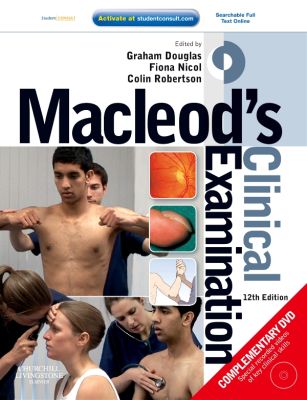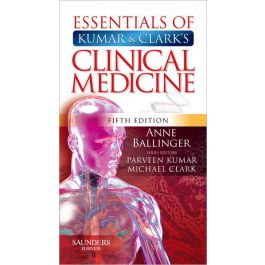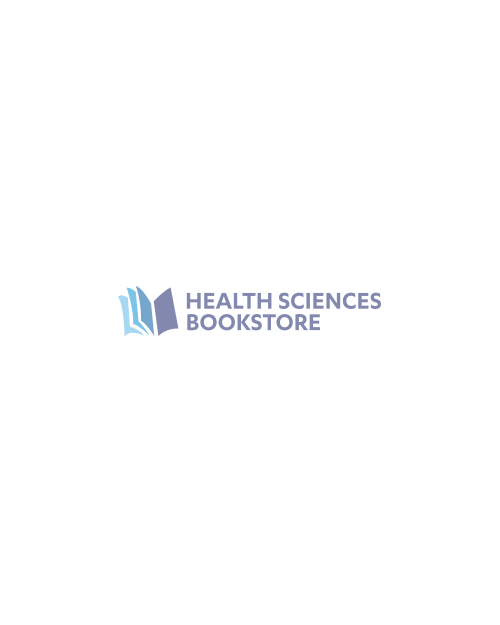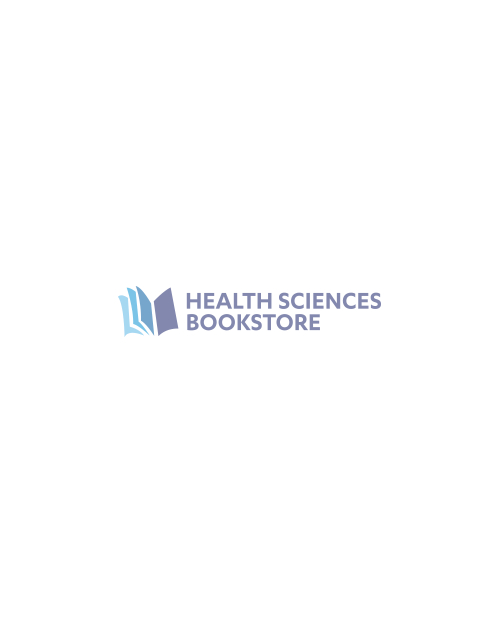Macleod's Clinical Examination: With STUDENT CONSULT Access, International Edition, 12th
by by Graham Douglas, Colin Robertson, Fiona Nicol-
Soft Cover
$27.99

= Review Macleod's is an essential part of your medical school kit. You will need this if you are ever going to learn how to percuss someone's lungs, listen for their heart sounds, and then feel like a proper doctor by asking them to say "Ahh" as they stick their tongue out at you. Edinburgh Medics, a Res Medica supplement courtesy of the Royal Medical Society, July 2005 [Macleod's] has lists scattered through the text in little boxes titled "Examination Sequence". Finally someone is telling us how to actually do the examinations we were meant to be practising all year. The book is logically broken down into the different systems, including a separate chapter for neonates and infants. Throughout the book there are tables and diagrams to illustrate the text in addition to the photos. 'MAD' the official journal of the Barts and The London Students' Association The 11th edition of Macleod's Clinical Examination has been well thought out to meet the needs of today's medical student, where contact with patients occurs from the very beginning. It includes relevant pictures, useful boxes highlighting the causes of various diseases and symptoms and clear, concise diagrams. There are snippets of imaging to help the reader familiarise themselves with it and where it can be used...A particularly good learning tool within the book is the patient examples at the end of each examination section. A run through of what to examine in a specific case is given in a step by step format. An easy to read, well laid out book which covers everything that medical students need to know to examine patients. Brighton University Medical Student I recommend all medical students to get hold of this book. It is a brilliant handbook for all students in the clinical part of the study. Medical Student, Norwegian University of Science and Technology, Trondheim "Macleod covers the basics and common presentations in considerable detail, with maximal use of colourful illustrations." Cambridge Medicine, Vol 21, No 3, October 2007 --This text refers to an out of print or unavailable edition of this title. = Description ‘Highly Commended’ in the 2006 British Medical Association Awards! "an incredibly thorough book which is very well illustrated - a must in a book explaining how to perform examinations!" (Medical Student Review) This book will show you how to: • talk with a patient • take the history from the patient • examine a patient • formulate your findings into differential diagnoses and rank these in order of probability • use investigations to support or refute your differential diagnosis Macleod’s Clinical Examination builds on the critical success of the previous edition by describing the practical skills that every clinician must acquire and develop in order to evolve diagnostic procedures and management strategies and plans. The book is divided into three sections: (i) a general overview section on history taking and the general examination provides the framework on which to hang the detail, (ii) the systematic examination section documents clearly the relevant history, examination and special investigations as well as giving advice on their significance, (iii) the final section covers specialised areas and emphasises an integrated and structured approach to these patients. A bonus DVD contains specially-recorded videos demonstrating many of the clinical examination routines as they are described in the main text. Written by a team of editors and contributors who are all active clinicians and experts in their specialist fields. •This text provides a clear description of the fundamental skills of patient evaluation and examination, answering the cunning questions which arise from this. •Starts with a general overview section on history taking and the general examination that provide the framework on which to hang the detail. •The systematic examination section documents clearly the relevant history, examination and special investigations as well as giving advice on their significance. •The final section covers specialised areas and emphasises an integrated and structured approach to these patients. •Closely linked to its sister publication, Davidson’s Principles & Practice of Medicine, which complements the information in this text. •Available with full online access on Student Consult and with a DVD of specially-recorded videos demonstrating key clinical examination routines following the format laid out in the book. •The complementary DVD contains over two hours of specially-recorded videos demonstrating many clinical examination routines following the outline described in the main text. •A new introductory chapter emphasises the important principles in beginning a patient examination. •Two new chapters focus more precisely on the Skin and the Endocrine System, areas previously covered in the more general examination sections of the book. •A new chapter on the Examination of the Eye, previously incorporated into the examination of the neurological system. •Two new chapters focus on specific situations:. •Pre-operative Assessment looks at the examination required of a patient prior to sedation and anaesthesia. •Examination to confirm death. •The book now includes over 50 clinical examples in OSCE format, as used in final MB and MRCP (UK) PACES examinations, to help with revision.





